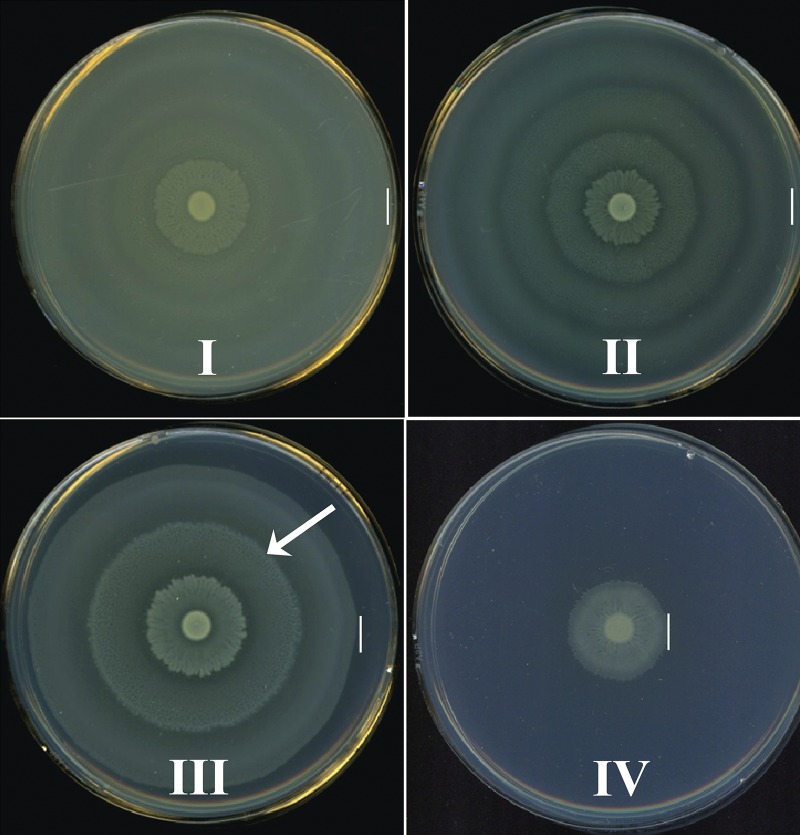FIG 1 .
The swarming patterns of P. mirabilis central pathway mutants fit into four general classes. P. mirabilis wild-type HI4320 and mutants were examined on lysogeny broth (LB) containing 15g/liter agar and 10g/liter NaCl by spotting 5 µl of overnight culture onto the center of a plate and incubating under aerobic conditions at 37°C for 18 h. Swarming phenotype of wild-type HI4320 (class I) and representative images of swarming phenotypes of mutants in the tricarboxylic acid (TCA) cycle (class II), the PPP (class III), and glycolysis (class IV). Class I, which encompasses wild-type HI4320, displays a normal swarming pattern resulting from multicellular migration of cells. For mutants of class II, swarming develops with altered periods or distance between swarming and consolidation cycles resulting in a distinct pattern of rings on the agar surface. Swarming phenotypes of class III display elongated swarming zones with delayed consolidation (arrow). Class IV swarming includes mutants with aberrant phenotypes displaying an overall decreased swarm zone diameter. The vertical lines indicate the outer edge of the swarm.

